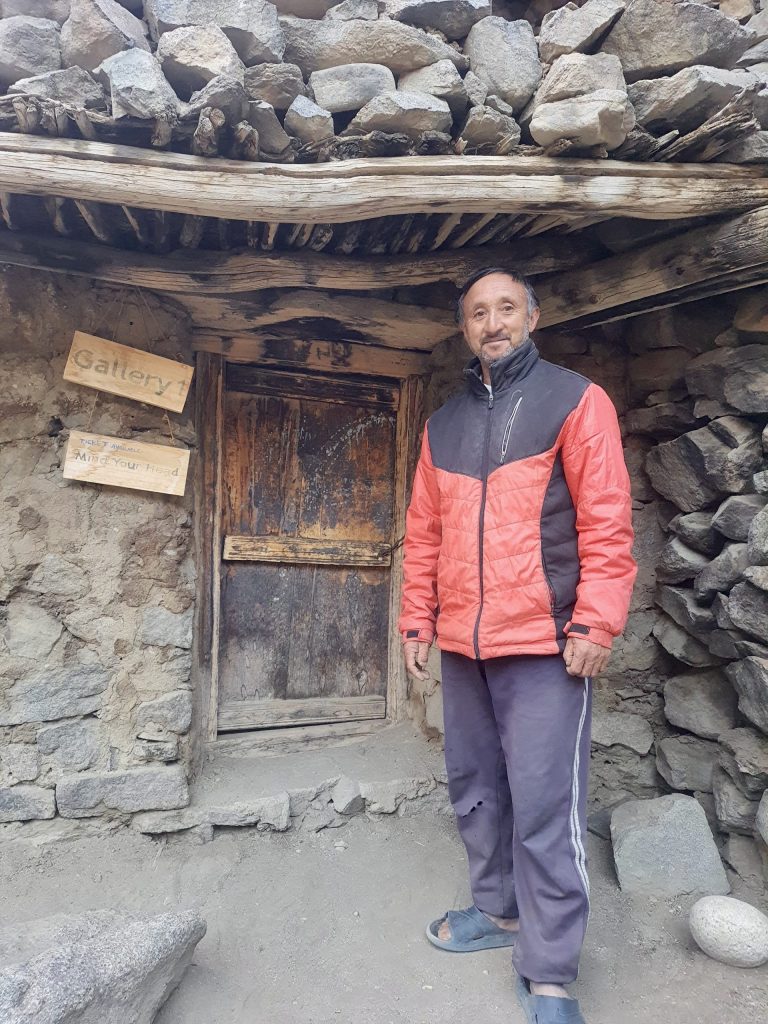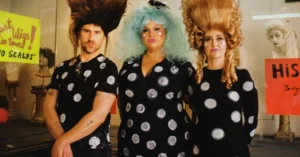A Kashmiri Border Museum Unlocks Memories Interrupted by War


HUNDERMAN, India — When I first arrived in Hunderman, a village near Kargil in India-controlled Kashmir, in March, I was struck by its stillness. The 500-year-old settlement’s residents believe it predates the Mughal and British empires. Once a prominent stop on the historic Silk Road trade route, this village has witnessed centuries of history, serving as a living testament to the region’s rich heritage. Yet, Hunderman is more than a relic of the past; it embodies the turbulent legacy of the India-Pakistan wars. Once part of Pakistan, the village suddenly became part of India in the 1971 war when the region was sliced in two by the Line of Control (LoC). Many villagers who had fled their homes at the time remained Pakistani citizens, while those who stayed home became Indian citizens overnight.
Today, however, the town is perhaps best known for Unlock Hunderman–Museum of Memories, founded in 2015 by brothers Baqir Ali and Mohammad Ilyas. Tucked inside the ruined stone houses of what is now an abandoned section of the village, this unlikely museum preserves the objects, letters, and everyday remnants of lives interrupted by war. It is in this decrepit archive that Hunderman keeps memory alive — safeguarding the traces of those who vanished across the border.


As I carefully navigate the narrow footpaths, I meet Baqir, 51, the museum’s owner and caretaker.“Back then, there were around 16 families living here, and that one there was my uncle’s house,” Baqir tells me in Urdu as he points to a row of roofless huts. “When the shelling started, most of them ran with their family towards the Pakistani side and only our family remained. We never saw them again. Many thought they would return in a week or two once things settled, but then weeks became decades.”
We arrive at a small wooden door fixed into a stone wall. Baqir produces an old-fashioned key and inserts it into an old lever lock mechanism for which Hunderman is known. “With time, we forget our pasts,” he continues. “This act of forgetting is also a blessing by Allah. If people are unable to forget, then how could we get over the miseries of life such as wars? That is why we started this project of converting these old homes into a museum — so that it reminds us of the love and the pain of separation caused by borders.”
Inside the museum’s dim first room, the war’s shadow looms large. Jagged shrapnel fragments, a cracked helmet, and relics of the battle that scarred this mountainside are arranged on rough wooden shelves. In a corner, a mud-caked mine lies safely encased — a chilling find by Baqir’s elder brother, Ilyas Ali, in a nearby field.

The heart of the museum, however, is not the remnants of war; it’s the human stories. Baqir leads me into a second small room lit by a single window. Here, under protective plastic, are letters, photographs, and personal notebooks donated by the town’s residents. “These are our treasures,” he says softly. Next to the notebook sits a black and white photograph of two young men posing by the Drass River — one of them settled in Pakistan, Baqir explains, and the other lived in Hunderman until he died five years ago. A trove of other intimate objects fill the museum.“There is a pair of worn-out leather shoes a man left by the door, hoping to come back for them; a bridal gown that a newlywed bride abandoned in haste,” Baqir continues. “These objects narrate a story of separation.” One framed letter in particular, translated into English, draws me in. It was written by Baqir’s maternal uncle. His letter reached his family years later, hand-carried by a traveler after cross-border mail resumed. “He kept writing to us, even when no replies came,” Baqir says. “This letter was his last. Now it’s here for our children to read.”


As we step outside into the sunshine, I notice an elderly man sitting on a stone step, warming himself. Baqir introduces him as Mohammad Ali, 82, one of Hunderman’s oldest inhabitants. He greets me with a gap-toothed smile and eagerly presses a dried apricot into my hand.
Mohammad’s life was upended by the border shift. “My elder brother was visiting relatives in Gilgit that winter, and he was asking me to come along but I was not in the mood,” he recalls. “Now, I think I should have gone with him. It is one of the biggest regrets of my life.” In the war’s chaotic wake, neighbors found themselves on opposite sides of a hostile divide. Mohammad’s next-door neighbors, a couple, were also separated by the new border. Unable to reunite in person, they later divorced through letters.
“We had not even imagined this village would become India. By the time we figured that out, it was too late and the army wouldn’t let us go back. It just was not realistic anymore,” Mohammad continues. “Now, all of us are old. I just pray that before dying we can hug our loved ones.” He leads me to a vantage point at the edge of the settlement, a few minutes’ walk from the museum. “Look,” he says, extending an arm toward the west. I can just make out a cluster of distant rooftops beyond the LoC. “That’s Brolmo, in Pakistan. My mother was born there.” Mohammad’s family, like many others here, has roots on both sides of the border. His mother moved to Hunderman after marriage, but her parents and siblings remained across the river.
“After the war, she never saw her parents again,” Mohammad says quietly. “She would stand here and gaze at those hills, knowing they were there somewhere.”

Yet Hunderman remains tethered to its isolation. As with other Indian-controlled Kashmiri villages, which are frequently subjected to internet blackouts, there is no mobile phone network; residents still walk toward nearby army camps or elevated ridgelines to catch the faintest signal — a routine made even riskier after the brief armed conflict between India and Pakistan earlier this month, when mortar fire and drone strikes once again turned the Line of Control into a battlefield. Still, the museum has drawn a steady trickle of visitors in its first decade — curious travelers, scholars, and those seeking quiet testimony. “We get tourists almost every day during summer,” Baqir tells me.
The Museum of Memories isn’t curated by professional archivists, but by the local residents of Hunderman. The exhibits are not grand monuments or government-issued plaques, but humble belongings imbued with personal meaning. Walking these alleys, I sense an overwhelming empathy for the people who once lived here and for those who still do, carrying the weight of history.



